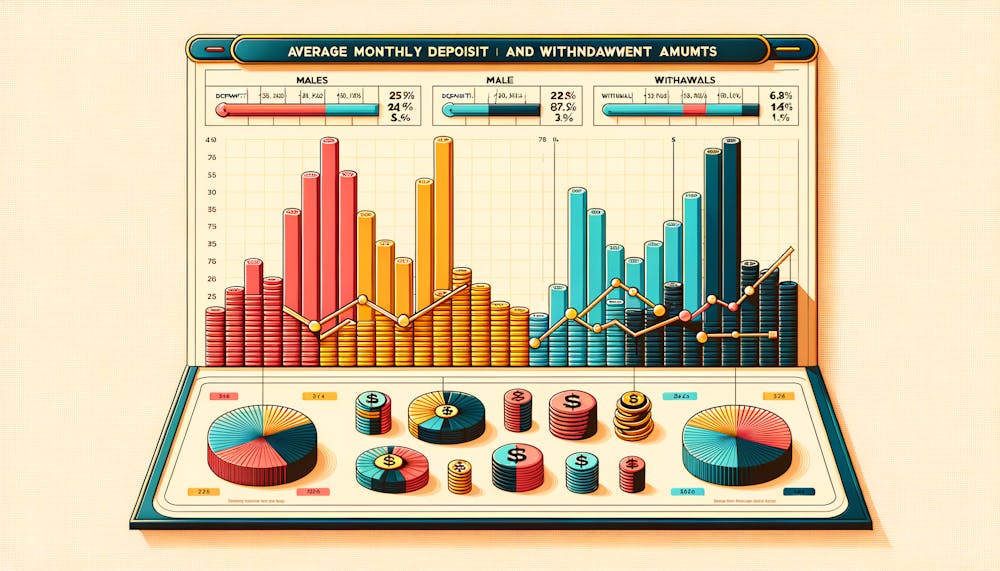Unveiling Gender Patterns in UK Online Gambling: A Detailed Insight


Exploring the latest data from the Department of Trust on UK gamblers reveals fascinating gender differences and similarities in online betting behaviours.
- The Department of Trust analysed transactions from 270,702 UK gamblers in Q4 2024.
- Key findings show males dominate online gambling, contributing to 68% of all activity.
- Despite earning 31% less, female gamblers’ behaviours mirrored those of male gamblers in frequency and loyalty to gambling sites.
- The average age of gamblers was 36, with no significant difference between genders.
- Males deposited and withdrew more money on average than females, with a notable income disparity.
- Suggestions arise that gambling companies may not be adequately catering to women with higher disposable incomes.
The Department of Trust’s latest examination into online gambling habits across the UK offers an unprecedented glimpse into industry trends. With data gleaned from over 270,000 UK gamblers in the last quarter of 2024, we’re granted a window into not just how much is being gambled, but who is gambling and how behaviours diverge across genders.
Key Differences and Surprising Parallels
One of the headline findings from this dataset is the disparity in gambling participation between men and women. Men are significantly more engaged in online gambling, accounting for 68% of all activity. This extends to the small details of financial transactions, where males deposit more often, averaging 9.42 monthly deposits, compared to 8.83 from females, and deposit larger amounts. The figure shows an average monthly deposit of £24.37 for males against £16.69 for females.
When it comes to withdrawals, a similar pattern emerges, with males withdrawing £116.95 per month from their gambling accounts, in contrast to females’ £91.42. Yet, despite these differences, the average net spend is closer than expected: £77.55 for males versus £55.04 for females monthly.
A Closer Look at Gender Behaviours
In terms of loyalty to gambling brands, both genders exhibit similar patterns, utilising an average of around two gambling sites. This suggests that gender differences in online gambling habits extend mainly to the volume and size of transactions, rather than the frequency or diversity of their gambling portfolio.
The data also unveils a significant income disparity, with the average salary for male gamblers standing at £38,000, compared to £28,900 for females. This 31% difference in earnings might partly explain the discrepancies in gambling spending. Yet, it hints at a broader issue: gambling companies may miss out on capturing the female market more effectively. According to Charles Cohen, founder of the Department of Trust, this may indicate a failure to appeal to women with higher disposable incomes—a potentially lucrative demographic.
What Does This Mean for the Industry?
The insights from this data challenge the gambling industry to broaden its appeal and consider gender disparities in income and participation more closely. While men and women show similar loyalty to gambling brands and engage with online gambling with comparable frequency, the difference in how much they’re willing to deposit and withdraw points points to underlying inequities and behaviours that operators could address.
The latest Department of Trust report underscores these nuances in gambling behaviour between genders, fueling a call to action for online gambling platforms. Understanding these dynamics can pave the way for more inclusive, responsive, and successful strategies that cater to the diverse needs of all players in the UK’s vibrant online gambling scene.
Comments
Comment Submitted for Review
Just now
Your comment has been submitted for moderator review. It will be posted shortly once approved
Latest News

Emily is our Casino Researcher and statistical mastermind. She uncovers all the latest trends through the numbers and creates valuable insights to our readers and internally, so we can cover our articles and journalism from a statistical background and angle.
Read more about the author






